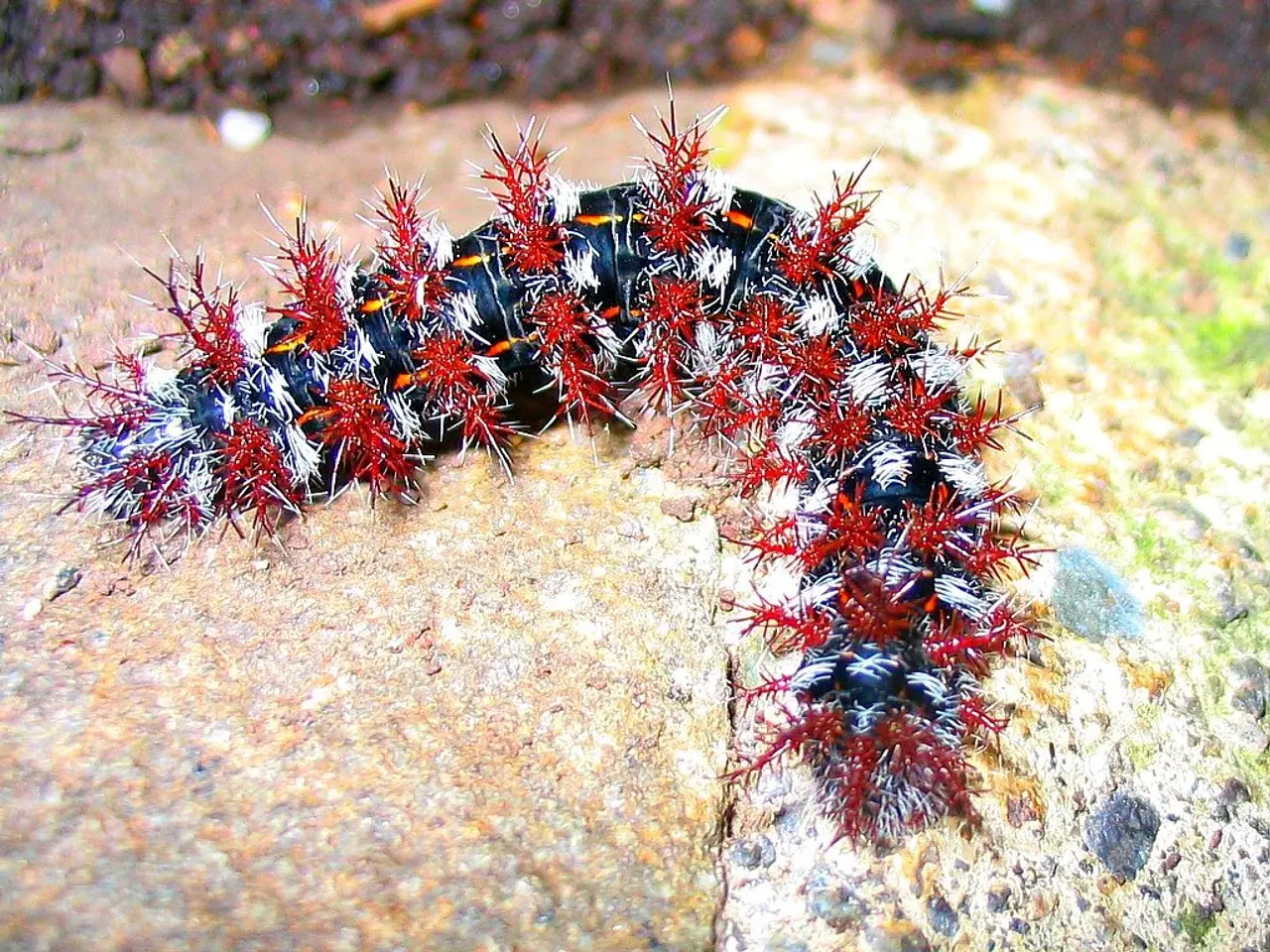City resident, Aalener, expresses frustration: "Nest elimination necessary"
In the picturesque city of Aalen, Germany, an unwelcome guest has taken residence - the Oak Processionary Caterpillar (OPC). This tiny creature, known for its toxic hairs, has caused quite a stir, prompting the city to take action and implement measures to address the issue.
## The Challenge: Removing OPC Nests
The OPC poses a significant health risk, with its tiny, toxic hairs causing severe allergic reactions, skin irritation, and respiratory problems in humans and animals. This makes manual removal of nests a hazardous task, limiting those who can undertake the work.
Another challenge is the difficult access to the nests, which are often high up in oak trees. This requires specialized equipment and expertise to reach safely, especially when the nests are located in public parks or near schools.
Climate change and warmer temperatures have contributed to more favorable conditions for OPC, leading to larger populations and more widespread nests. Additionally, the use of chemical pesticides is often avoided to protect other wildlife, particularly birds that feed on these caterpillars.
## The Response: Measures Being Taken
To combat the OPC infestation, cities like Aalen rely on trained professionals equipped with protective gear and specialized tools to safely remove nests. Public awareness campaigns are also employed to inform the public about the dangers of OPC and advise against approaching or touching nests.
Regular monitoring of oak trees is conducted to detect early signs of infestation and plan targeted interventions. Biological controls, such as encouraging natural predators like insectivorous birds, are also employed, although recent studies highlight the complexity and limitations of relying solely on birds for population control.
Non-chemical methods, such as mechanical removal, vacuuming, or using barriers to limit caterpillar movement, are preferred when environmental impacts are a concern.
## The Impact: Aalen Resident's Struggle
Waldemar Haaf, a 47-year-old resident of Aalen, is one of the many affected by the OPC infestation. He cannot use his terrace or garden due to the presence of OPC nests. Haaf expresses frustration with the city's Parks Department, feeling that they have not acted swiftly enough in the fight against the OPC.
The nests on Zeppelin Street, where Haaf resides, have not been removed by the city's Parks Department, leading to Haaf and his wife suffering from allergic reactions caused by the caterpillars' burning hairs. The itching rash caused by the caterpillars' hairs is almost unbearable for Haaf and his wife, and they have taken measures to prevent more hairs from entering their apartment.
Sleep is impossible for Haaf and his wife, and they have to keep their windows closed all day due to the presence of the caterpillars' nests. The feeling of being abandoned is overwhelming for Haaf, who lives next to the city forest Rohrwang on Zeppelin Street.
## The Future: A Temporary Solution
Despite the challenges, the city of Aalen is actively working to contain the OPC infestation. Up to 30 kilograms of caterpillars per tree are being removed from infected trees. However, the city asks for understanding that the effort must have a limit if the danger to the workers becomes too great.
The Kurt-Früh-Weg, the bike lane on Rombacher Straße, and the footpath along the Stadionweg remain closed to pedestrian and bicycle traffic until July 31st. Rohrwang, Greut, and Burren should be avoided for the time being.
A decrease in the infestation is currently expected by the end of July, according to consultation with the Forest Research Institute Baden-Württemberg. For more information on the OPC and the measures taken by the city of Aalen, visit www.aalen.de/eps.
[1] References omitted for brevity.
- Given the health risks posed by the Oak Processionary Caterpillar (OPC), cities like Aalen rely on professionals in environmental science and health-and-wellness to safely remove nests and implement prevention measures.
- Aalen residents, such as Waldemar Haaf, are struggling with mental-health issues and skin-care problems due to the presence of OPC nests near their homes, a situation that highlights the urgent need for action against climate-change related pests.
- To achieve long-term success in the fight against OPC, cities must adopt a multi-pronged approach that combines regular monitoring, the use of biological controls, and the adoption of non-chemical methods in environmental-science research.
- In light of the challenges faced in removing OPC nests and the need to balance health concerns with environmental preservation, city residents must comply with park closures and be mindful of their personal fitness-and-exercise routines to ensure their safety.




